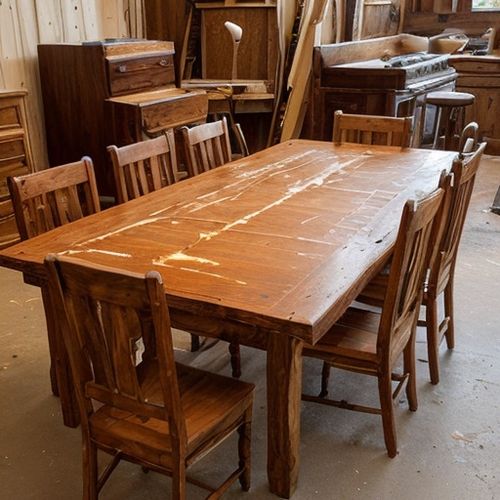Wooden furniture adds warmth and character to any home, but over time, scratches and minor damages can mar its beauty. While professional repairs can be costly, there are several budget-friendly methods to restore your wooden pieces to their former glory. Whether it’s a shallow surface scratch or a deeper gouge, understanding the right techniques can make all the difference.
Assessing the Damage is the first step in any repair process. Not all scratches are created equal, and the approach you take will depend on the depth and severity of the mark. Light surface scratches, often caused by everyday use, are the easiest to fix. Deeper scratches or those that have penetrated the stain or finish require a bit more effort. Before diving into repairs, clean the area gently with a soft cloth and mild soap to remove any dirt or wax buildup that could interfere with the restoration.
For minor scratches, natural remedies can work wonders. A simple mixture of equal parts vinegar and olive oil can help blend light scratches into the surrounding wood. Apply the solution with a soft cloth, rubbing along the grain, and let it sit for a few minutes before buffing it off. The oil conditions the wood while the vinegar helps clean and blend the scratch. Another household staple, mayonnaise, can also be effective for shallow marks. The oils in mayonnaise penetrate the wood, temporarily swelling the fibers to minimize the appearance of scratches. Leave it on for a few hours before wiping it away.
Deeper scratches may require a bit more ingenuity. If the scratch has exposed raw wood, a wax filler stick or crayon in a matching shade can be used to fill the groove. Gently rub the wax over the scratch, then use a plastic scraper or credit card to level it with the surface. For a more durable fix, consider using a wood marker or stain pen that matches your furniture’s finish. These tools allow for precise application and can be layered to achieve the right color depth. Once dry, a light application of clear furniture wax will protect the repaired area.
When dealing with veneer or laminate furniture, extra care is needed. Unlike solid wood, these materials are more delicate and can be damaged by harsh treatments. For light scratches on veneer, a walnut or pecan can work surprisingly well. The natural oils in the nut help darken the scratch, making it less noticeable. Simply rub the meat of the nut over the scratch, then buff with a soft cloth. For deeper marks, a specialized wood filler designed for veneer is the safest option. Avoid using water-based products, as they can cause the veneer to swell or peel.
Prevention is always better than repair. Once your furniture is restored, take steps to protect it from future damage. Felt pads under heavy objects, coasters for drinks, and regular dusting can go a long way in preserving the finish. For high-traffic pieces, consider applying a fresh coat of wax or polish every few months to maintain a protective barrier. With a little care and attention, your wooden furniture can remain beautiful for years to come, even on a tight budget.

By Rebecca Stewart/Apr 25, 2025

By James Moore/Apr 25, 2025

By William Miller/Apr 25, 2025

By Samuel Cooper/Apr 25, 2025

By Rebecca Stewart/Apr 25, 2025

By James Moore/Apr 25, 2025

By David Anderson/Apr 25, 2025

By James Moore/Apr 25, 2025

By Eric Ward/Apr 25, 2025

By Olivia Reed/Apr 10, 2025

By Ryan Martin/Apr 7, 2025

By Sarah Davis/Apr 7, 2025

By Natalie Campbell/Apr 7, 2025